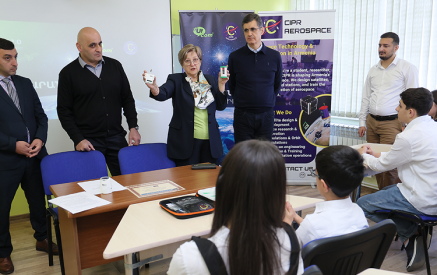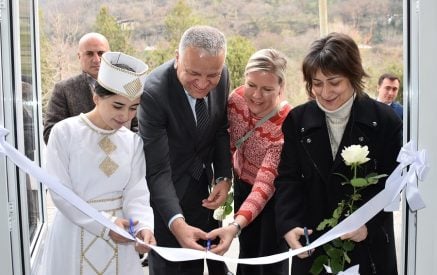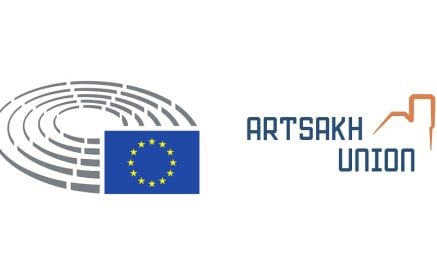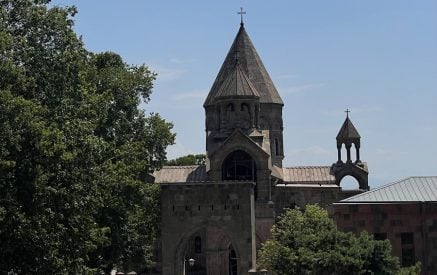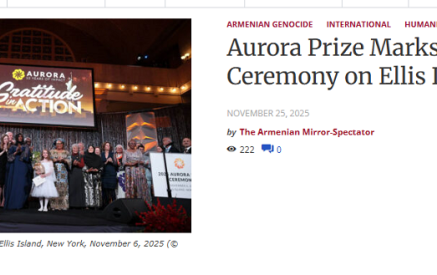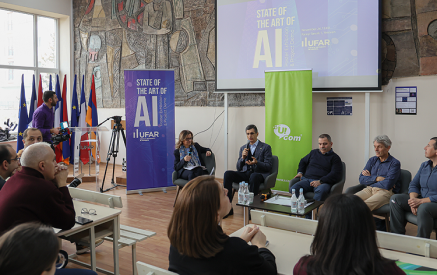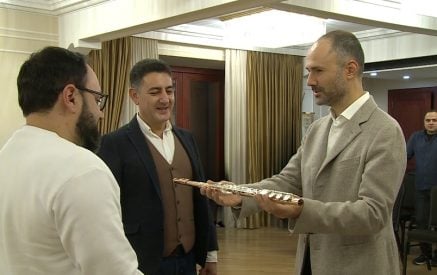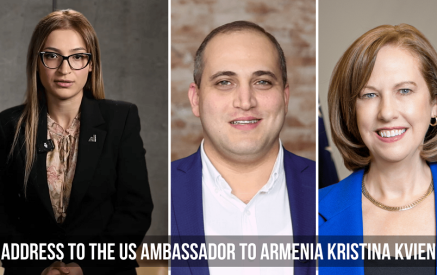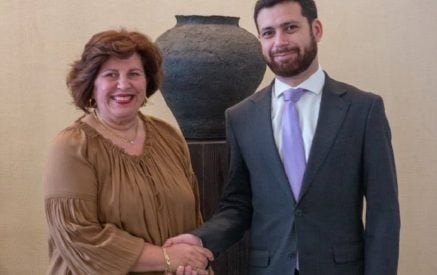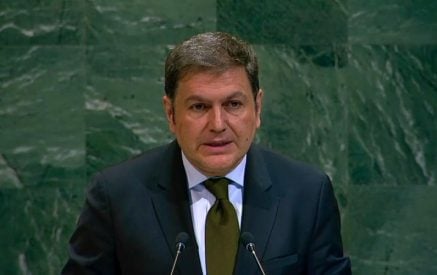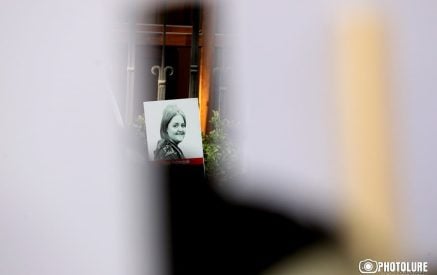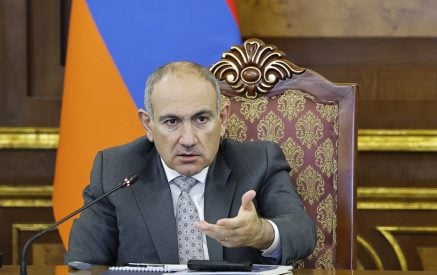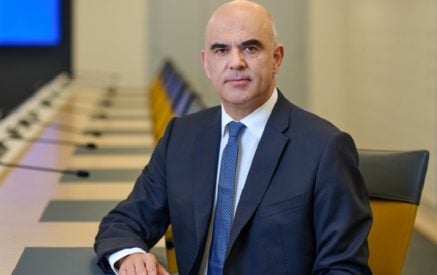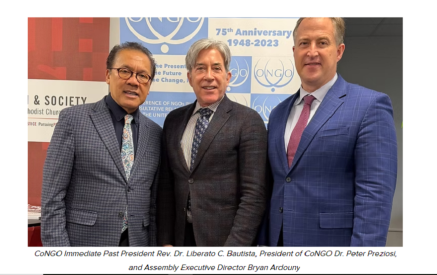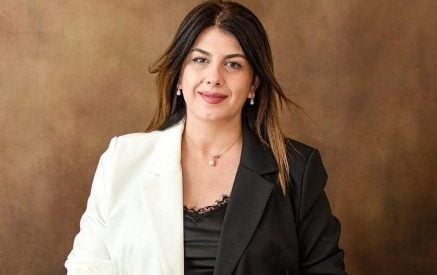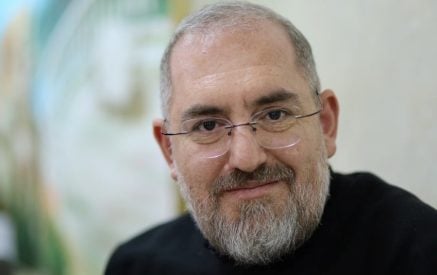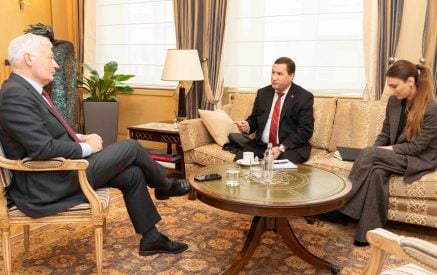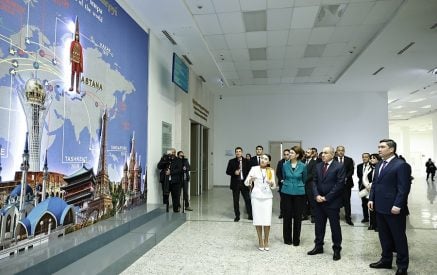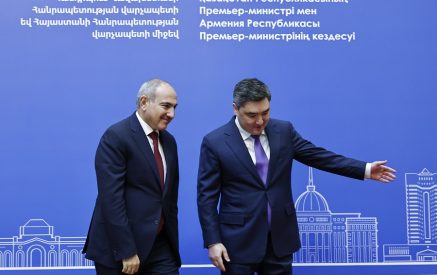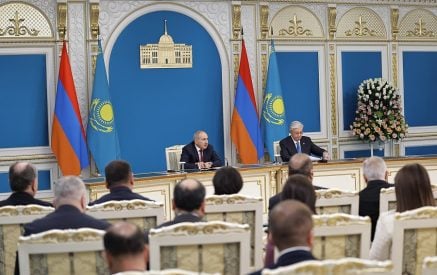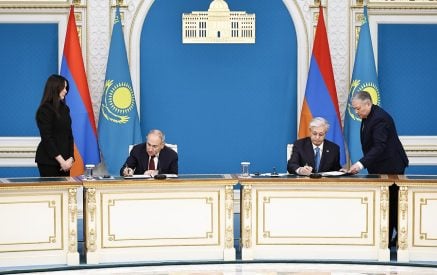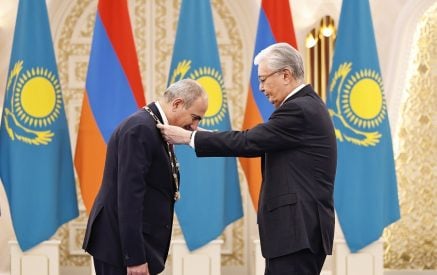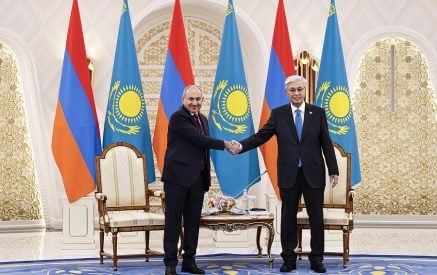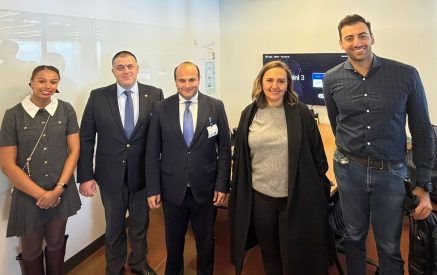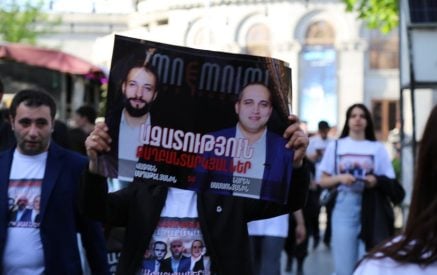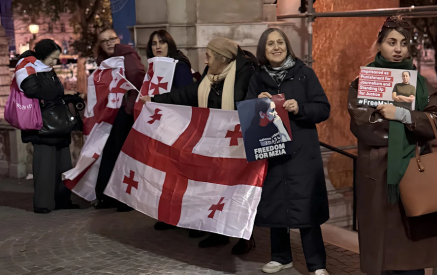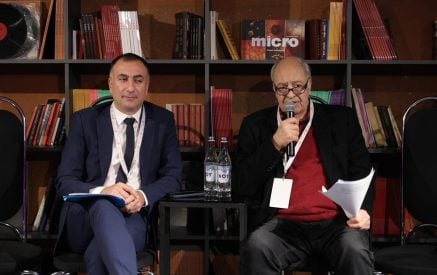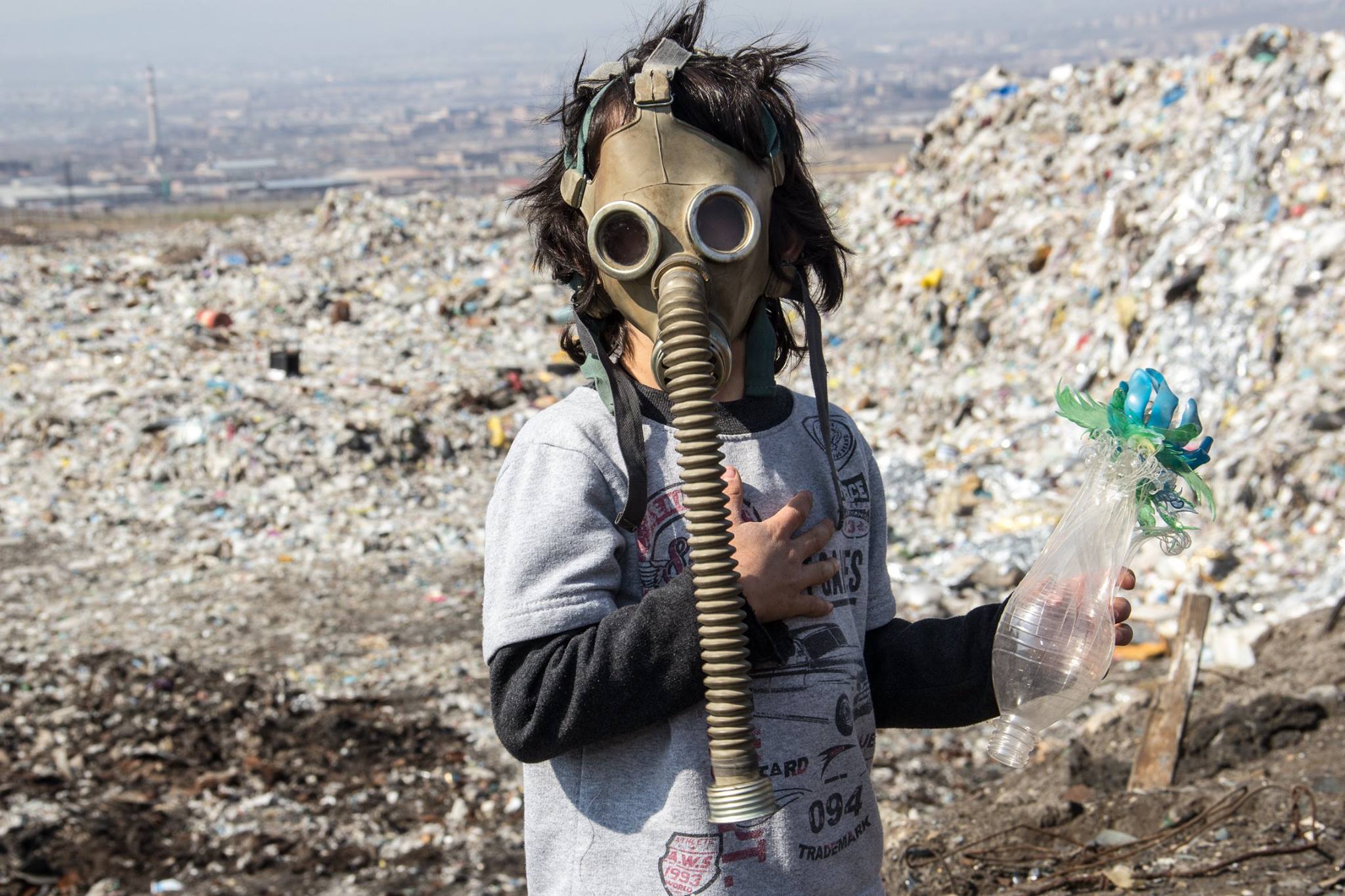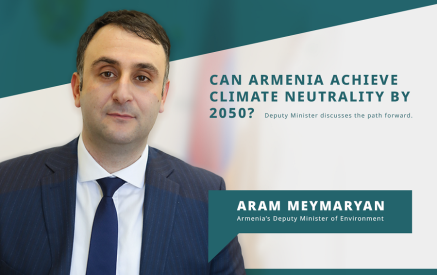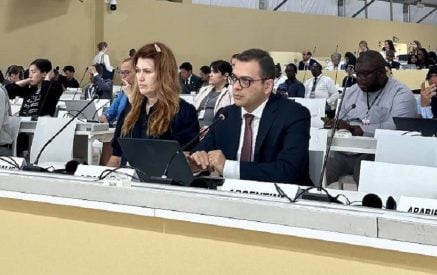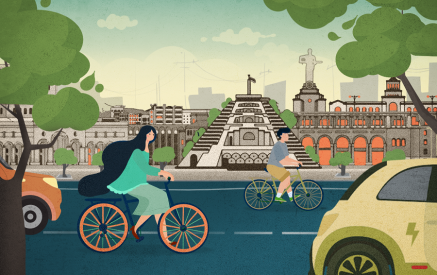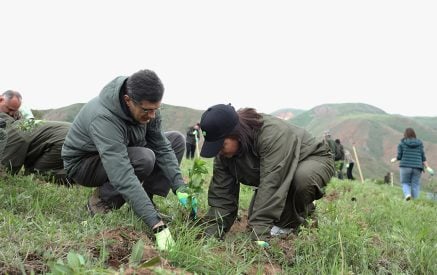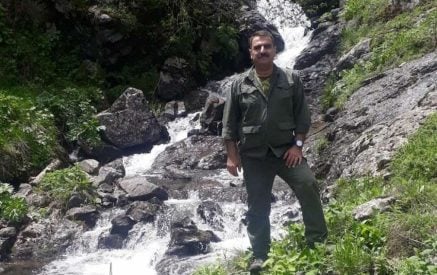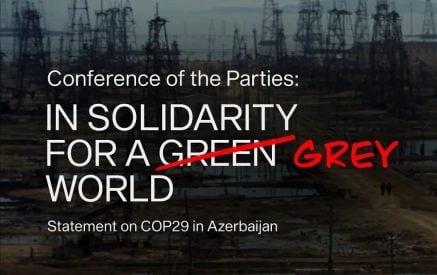This article initially appeared on TheArmenianWeekly.
To solve the problem of waste dumps in Armenia, in recent years the government has been making steps towards creating landfills that will meet international standards. For this purpose it is now working towards building 5 sanitary landfills all over Armenia. The biggest will be in Yerevan located next to the current dump in Nubarashen. Around 25 million Euro will be allocated to construct this sanitary landfill.
Current dumpsite in Nubarashen which is just 10 kilometres away from Yerevan city centre is filled with 9.5 million tonnes of waste accumulated since 50s. Every year this site accepts 300.000 tonnes of waste. It meets no international standards for landfills therefore there are continuous toxic flows from the waste as well as methane gas emissions from rotting waste.
The new sanitary landfill however will be constructed according to international standards, where the soil will be separated from layers of waste, the landfill will be fenced and the methane gas will be collected thus reducing its emissions into atmosphere. As stated in the project description the goal of this project is to “turn the uncontrolled dumpsite with unacceptable technical and environmental standards into new sanitary landfill matching the EU standards”. The new landfill will be environmentally beneficial, since “it will lead to the reduction of around 3000 tons of methane gas emissions, which is the equivalent of 60.000 tonnes of carbon dioxide”.
However, some of the concerns regarding this project are as follows: more than half of the funds secured for this project will be in form of loans provided by European Bank for Reconstruction and Development (EBRD) and European Investment Bank (EIB). Each provide loan of 8 million EUR. Another 8 million EUR is a grant from EU Neighbourhood Investment Facility (NIF). Besides, the new landfill will be built next to the current dumpsite on an area of around 29 hectares and will have a life span of about 28 years. This means that after 28 years the municipality will have to think of constructing a new landfill which will most probably require another lump of loan.
But the most concerning aspect is that the EU landfill requirements related to waste sorting and recycling have been omitted from this landfill project “due to affordability constraints”. The Environmental and Social Impact Assessment of the new landfill project dating back to 2015 also states that “although a waste sorting facility was considered as an option, due to affordability constraints resulting from limited financial resources it could not be included in the design.”
Meanwhile, there is a public demand to include the components of waste sorting and recycling into this project. On December 4, 2017 an open letter was sent on behalf of various local organizations, civil initiatives and individuals urging local authorities as well as project sponsors to implement a greener policy by introducing sorting and recycling components in this waste management project.
The responses of the project sponsors and implementers are not promising
There was a correspondence with the sponsors and implementers of this project that aimed to find out why the waste sorting and recycling components that make the project more sustainable have not been included in the project. In its reply EBRD mentioned that thanks to the loan from EIB, waste diversion measures (i.e. waste collection containers and vehicles for separate collection of recyclable materials and bio-waste, recycling center(s), material recovery and composting facilities) have been included in the project, but the scope of this component is currently under discussion with the Yerevan Municipality.
EIB’s response is similar as it states that “the project comprises a waste diversion component that may include separate collection equipment, recycling centers, material recovery facility and composting facility. The scope of this component is still under discussion with the Municipality of Yerevan”.
Additionally, both stated that landfill gasses will be collected at both the existing and the new landfill and energy recovery is foreseen from the collected landfill gas.
The Yerevan Municipality answered in an already familiar manner that the components of waste sorting and recycling are in a discussion phase.
It is the letter to the government, answered by the Ministry of Territorial Administration and Development that makes it clear that waste sorting and recycling is not discussed. Instead they state that they are considering the option of building waste incineration facility (based on biochemical process) which will generate energy from waste. To clarify this aspect, energy from waste is retrieved either by burning waste or by collecting the gasses generated from rotting waste.
The ESIA of the project stated that building facility for burning waste would be too expensive, that’s why this option was not included. Another option of converting energy from waste is by collecting the gasses from rotting waste to produce energy. This is the option which is considered judging from the responses of the local authorities. But in such circumstances it is unclear what type of waste sorting and recycling component the sponsors and the local authorities are negotiating, if the waste is going to eventually rot and serve as an energy generator.
This type of waste management not only doesn’t contribute to solving the main problem which is creating less waste thanks to recycling, but it also misuses a lot of resources. Armenia produces glass, plastic, paper and therefore these could be made of already existing recycled materials. Besides, waste recycling saves energy, for example recycling paper saves trees and demands 60% less energy than creating new from raw material, recycling plastic takes 88% less energy and recycling glass takes 70% less energy than creating from raw materials.
Before stating that building sorting and recycling facilities costs a lot, one must check the waste management projects in Moldova, Georgia, Belarus where similar projects have been planned. For example Chisinau Solid Waste project in Moldova costs about 26 million EUR – 10.5million of which is an EBRD loan. This project has similar activities planned as in case of Yerevan Solid Waste project, with the additional component of introducing a waste sorting line that will increase waste recycling activities. Adjara Solid Waste project that was to serve Georgian towns Kobuleti and Batumi, cost around 8 million EUR, of which 3 million loan from EBRD, and it too had the recycling component. Puhovichi Solid Waste project in Belarus cost 7 million EUR of which 5 million is EBRD loan. This project too will invest in constructing a new waste sorting facility which in its turn will rehabilitate waste recycling services.
In Armenia there are already many small recycling companies recycling plastic, paper, rubber, metal, etc and therefore introducing only waste sorting component into this project and then sending the sorted materials to these companies for recycling could be an option (list of these companies as of 2014, p 20-22) thus reducing the need for expenses to construct a new recycling facility.
While collecting gasses from waste for producing energy will save the environment from getting a huge doze of methane gas, yet this won’t solve the main problem of creating a waste conscious society that will eventually work towards creating less waste. The amount of waste will not be reduced as a result of burying the waste and collecting its gasses. Only recycling and reusing will decrease waste. What will the local authorities do in 30 years, when the new landfill will have to be closed down? Will they create another landfill with new loan burden for the country (Armenia’s loan burden is already 6 billion USD, which is 55% of GDP). Whereas waste sorting and recycling and waste conscious society could reduce the amount of waste, save energy and the need for raw materials. This is a sustainable step that has to be in the agenda of the Armenian authorities and the European sponsors. It is dictated by the environment and the public and it has to be taken into account.
Armenian Environmental Front (AEF) civil initiative


